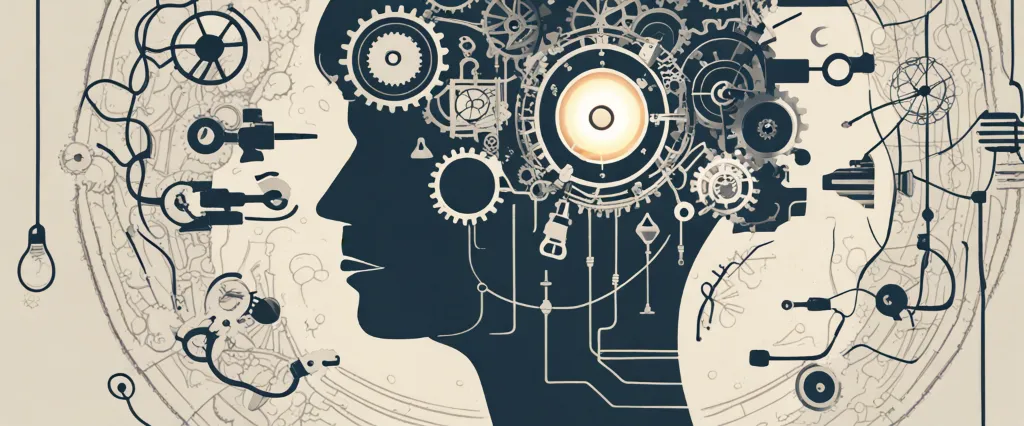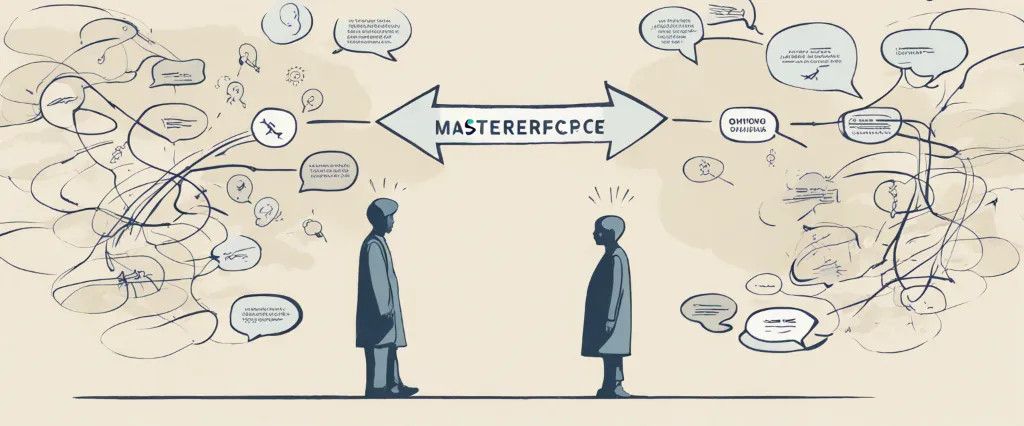
In “How the Mind Works,” renowned cognitive scientist Steven Pinker delves into the fascinating inquiry of understanding the intricacies of the human mind. With his remarkable expertise in the field, Pinker embarks on a captivating exploration of the fundamental question: what exactly goes on inside our minds? Through a multidisciplinary approach encompassing cognitive science, psychology, biology, and evolutionary theory, Pinker endeavors to unravel the mysteries of human cognition. With his engaging writing style that seamlessly blends wit, scientific rigor, and accessible explanations, Pinker takes readers on a captivating intellectual journey, shedding light on the intricacies of our thoughts, emotions, consciousness, and ultimately, what makes us human.
Chapter 1: The Computational Theory of Mind
Chapter 1 of “How the Mind Works” by Steven Pinker, titled “The Computational Theory of Mind,” introduces the key ideas and framework of the book. Pinker starts by emphasizing that the mind is not a mysterious black box but a complex system that can be analyzed scientifically.
Pinker introduces the computational theory of mind, which argues that the mind is fundamentally a kind of information processing system. He compares the functioning of the mind to that of a computer, suggesting that if we understand the algorithms implemented in the brain, we can comprehend how the mind works.
The author distinguishes between two levels of explanation: the “ultimate” level, which deals with why certain cognitive processes exist, and the “proximate” level, which focuses on how these processes work. The computational theory of mind primarily focuses on the proximate level, elucidating the algorithms and mechanisms responsible for different aspects of cognition.
Pinker also discusses the concept of adaptation, explaining that the mind is shaped by the processes of natural selection over evolutionary time. Our cognitive abilities, ranging from language acquisition to facial recognition, have evolved to solve specific adaptive problems, giving rise to the complex machinery of our minds.
Furthermore, the chapter touches upon the nature versus nurture debate, rejecting the idea of a blank slate (tabula rasa) mind and asserting that humans are born with innate cognitive faculties. Pinker argues that many aspects of human nature, including language and social instincts, can be explained by the computational machinery of the brain.
In summary, Chapter 1 of “How the Mind Works” provides an overview of the computational theory of mind, emphasizing that the mind can be understood as an information processing system. It also highlights the role of evolutionary adaptation and rejects the notion of a blank slate mind.
Chapter 2: The Nature of Consciousness
Chapter 2: The Nature of Consciousness of the book “How the Mind Works” by Steven Pinker provides an in-depth examination of consciousness, addressing the question of what consciousness is and how it functions. Pinker asserts that consciousness is a kind of data-processing system that takes in information from the environment and processes it to create the experience of being aware.
Pinker begins by debunking various misconceptions about consciousness, such as the notion that it resides in a single “homunculus” or that it is a mystical phenomenon. He argues that consciousness arises from the complex interplay of different neural processes in the brain, each with its own specific function.
The chapter explores how consciousness is involved in various cognitive processes, including perception, attention, memory, and introspection. Pinker presents evidence from cognitive psychology and neuroscience to support his claims, illustrating how these different aspects of consciousness can be understood in terms of information processing.
Pinker also highlights the role of consciousness in decision-making and free will, challenging the popular notion that our conscious experience is the ultimate arbiter of our actions. He argues that consciousness plays a smaller role in decision-making than commonly believed, with most of our behavior being determined by unconscious processes.
In conclusion, Chapter 2 of “How the Mind Works” provides a comprehensive overview of consciousness, presenting it as a complex and multifaceted cognitive phenomenon. Pinker argues that understanding consciousness requires a scientific examination of neuronal processes and the information processing that occurs in the brain, dispelling common misconceptions along the way.
Chapter 3: The Evolution of the Mind
Chapter 3: The Evolution of the Mind from the book “How the Mind Works” by Steven Pinker provides an extensive exploration of the evolutionary origins and development of the human mind. Pinker argues that our minds are products of evolution, shaped over millions of years to solve specific problems posed by the environment our ancestors inhabited.
Pinker begins the chapter by introducing the concept of “reverse engineering,” comparing the mind to a complex piece of technology that can be understood by deconstructing its functions. He emphasizes that the mind is not a blank slate but rather a complex system that has been honed by natural selection.
The author then delves into the process of natural selection, explaining how inherited traits that enhance an organism’s reproductive success are more likely to be passed on to future generations. He discusses the idea of “inclusive fitness,” where behaviors that benefit one’s genetic relatives also increase the chances of their genes being passed on, thus promoting cooperation among relatives.
Pinker goes on to explore how natural selection has shaped various mental capacities in humans, such as perception, language, emotions, and social behavior. He argues that our perception is not a passive representation of the world but an active process of interpretation and prediction. Language, according to Pinker, is a product of natural selection that allows us to communicate complex ideas and coordinate social interactions.
Furthermore, Pinker discusses the evolutionary origins of emotions, arguing that they are not irrational feelings but rather adaptive responses to specific situations. He also explains the importance of social cognition, the ability to understand the thoughts and intentions of others, in human survival and success.
In summary, Chapter 3 of “How the Mind Works” presents a compelling case for understanding the human mind through the lens of evolutionary biology. Pinker argues that our mental abilities are not arbitrary but have evolved to serve specific functions critical to our ancestors’ survival and reproductive success. Understanding the evolutionary origins of our minds provides valuable insights into the way we perceive, communicate, and navigate the social world.
Chapter 4: The Language Instinct

Chapter 4 of “How the Mind Works” by Steven Pinker, titled “The Language Instinct,” explores the concept of language as a human instinct and dissects various theories that seek to explain the origins and workings of language.
Pinker argues that language is not a cultural invention, but rather an innate ability deeply rooted in the human brain. He presents evidence from cognitive science, neuroscience, and evolutionary biology to support this claim. For instance, he discusses the remarkable ease with which young children acquire language and demonstrates that language is not dependent on intelligence or conscious effort.
Furthermore, Pinker addresses two opposing views concerning language evolution: the “mimicry theory” and the “mutation theory.” The mimicry theory suggests that humans acquired language by imitating sounds, while the mutation theory posits that a genetic mutation allowed for the emergence of language. Pinker proposes that both theories have their merits, but ultimately leans towards the mutation theory as it aligns with scientific evidence linking certain genetic mutations to language impairments.
Pinker also delves into the role of grammar in language, challenging the notion that it is solely a formal system of rules. He highlights the “mentalese” hypothesis, which suggests that grammar is not only a vehicle for communication but also a structure that organizes thoughts. Mental representations expressed through grammar allow humans to manipulate concepts and reason logically.
In conclusion, “The Language Instinct” asserts that language is an instinctual ability shaped by evolution and genetic predisposition. Pinker’s argument deepens our understanding of language as a fundamental aspect of human nature and challenges conventional beliefs about its origins and mechanics.
Chapter 5: The Perceptual System
Chapter 5 of “How the Mind Works” by Steven Pinker is titled “The Perceptual System” and focuses on how the brain processes and interprets sensory information from the environment.
Pinker begins by highlighting that perception is not a passive process but an active construction of the brain based on incoming sensory data. He discusses the role of different sensory modalities, such as vision, hearing, and touch, in perceiving the world. He explains that perception is not a direct representation of the world but rather an interpretation shaped by evolutionary constraints and the brain’s internal models.
Pinker explores the complexities of vision, emphasizing that the brain does not see the world as a collection of isolated objects but rather as a continuous and fluid scene. He explains the concept of “edges” and how the brain uses them to construct boundaries between objects. Additionally, he elaborates on the perception of color, depth, and motion, and how these are constructed by the brain based on sensory input.
Touch is another major focus of this chapter. Pinker explains how the brain receives tactile information and processes it to understand different textures, shapes, and spatial relationships. He also delves into the fascinating phenomenon of phantom limbs, where amputees perceive sensations in their missing limbs due to the brain’s internal model not aligning with the actual physical reality.
In conclusion, Pinker highlights that perception is an active process that involves the brain constructing a subjective reality based on sensory signals. He emphasizes that this constructed reality is not an accurate reflection of the external world, but a useful and adaptive interpretation that enables us to navigate our environment. Understanding the complexities of perception is crucial in unraveling the mysteries of how the mind works.
Chapter 6: The Emotional Mind
Chapter 6: The Emotional Mind of the book “How the Mind Works” by Steven Pinker delves into the nature of human emotions and their evolutionary purpose. Pinker challenges the common belief that emotions interfere with rational thinking and argues that they play a crucial role in decision-making and social interactions.
Pinker begins by outlining the basic components of emotion, which include a subjective feeling, physiological changes, and an outward expression. He suggests that emotions are not simply irrational impulses but are designed by evolution to guide behavior and enhance survival. Drawing on evolutionary psychology, Pinker highlights that emotions are adaptations shaped by natural selection to help humans navigate their environment.
The chapter explores various emotions such as fear, anger, love, and sadness, and examines their underlying mechanisms. Pinker explains how emotions depend on a complex network of brain regions, including the amygdala, prefrontal cortex, and various sensory areas. He emphasizes that emotions are not solely reactive but can also be triggered by thoughts and beliefs, allowing humans to anticipate and prepare for future events.
Moreover, Pinker addresses the cultural aspects of emotions, demonstrating that although emotions are universal, their expression and interpretation can vary across different cultures. He argues that cultural differences in emotional experiences stem from variations in beliefs and social norms rather than fundamental disparities in emotional responses.
In conclusion, Pinker challenges the notion that emotions are disruptive to rational thinking and highlights their adaptive purpose. By understanding the evolutionary significance of emotions and their neural mechanisms, Pinker aims to provide insight into the complex interplay between reason and emotion in shaping human behavior.
Chapter 7: The Social Mind
Chapter 7 of “How the Mind Works” by Steven Pinker explores the concept of the “social mind” — how humans perceive and interact with others, and how social cognition has evolved throughout human history. Pinker argues that our social instincts are products of natural selection, shaped by the need to navigate complex social interactions and successfully relate to others in our environment.
Pinker delves into the theory of mind, which involves our ability to attribute mental states, thoughts, and intentions to others. He suggests that this ability is fundamental to social interaction, as it allows us to predict and understand the behavior of others, thereby facilitating cooperation and forming social bonds. He also highlights how theory of mind helps us decipher nonverbal cues, such as facial expressions and body language, enabling us to judge others’ emotions and intentions.
The author discusses various aspects of social cognition, including empathy, moral judgments, and deception. Empathy, Pinker argues, is a crucial mechanism that helps us understand and share the experiences and emotions of others, promoting prosocial behavior and cooperation within groups. He also explores moral judgments, positing that they are rooted in our innate moral emotions, such as compassion and disgust.
Moreover, Pinker explores deception as a social adaptation. He contends that deception has been a valuable tool throughout human evolution, allowing individuals to manipulate others for personal gain. Pinker also highlights the complexities of deception, as it requires the deceiver to be aware of the target’s beliefs and intentions.
In summary, Chapter 7 of “How the Mind Works” unpacks the intricacies of the social mind, emphasizing the importance of theory of mind, empathy, moral judgments, and deception in our social interactions. By understanding these mechanisms, Pinker aims to shed light on how our minds have evolved to navigate the complexities of social life.

Chapter 8: The Nature-Nurture Debate
Chapter 8 of “How the Mind Works” by Steven Pinker explores the ongoing debate between nature and nurture regarding the origins of behavior and cognitive abilities in humans. Pinker argues that both nature (genes) and nurture (environment and culture) play crucial roles in shaping our minds.
Pinker starts by highlighting the historical context of the nature-nurture debate, dating back to the 19th century with the rise of theories such as social Darwinism and eugenics. He emphasizes that extreme views favoring either genetic determinism or complete tabula rasa (blank slate) have been discredited, as modern research has revealed the complex interaction between genes and environment in determining human traits.
Pinker presents various studies that support the role of genes in shaping behavioral traits, intelligence, and personality. He discusses evidence from twin and adoption studies, showing that identical twins raised apart share more similarities compared to fraternal twins raised together. Such findings suggest a strong genetic influence on traits like intelligence and temperament.
However, Pinker also underscores the importance of environmental factors. He explains the concept of gene-environment correlation, where genes can influence the type of environment one experiences. For instance, genes may influence personality traits that, in turn, guide an individual’s choice of friends or environments. Moreover, cultural factors influence the expression of genes, as certain behaviors and abilities vary across different societies.
Pinker argues against the false dichotomy between nature and nurture, emphasizing the intricate interplay between genes and environment. He suggests that rather than focusing on which factor is more influential, it is more productive to understand how genes and environment interact and influence each other. This perspective helps to unravel the complexity of human behavior and cognition, providing a more nuanced understanding of the nature-nurture debate.
After Reading
In conclusion, Steven Pinker’s book How the Mind Works provides a comprehensive and thought-provoking analysis of the human mind. He explores the intricacies of our cognitive processes, shedding light on how and why our minds have evolved the way they have. Pinker delves into various aspects of psychology, including perception, memory, language, emotions, and social behavior, offering a multitude of fascinating insights. By delving into the evolutionary origins of the mind, Pinker paints a vivid picture of the complex interplay between genetics and environment in shaping human cognition. Overall, How the Mind Works serves as a compelling exploration of the mysteries of the human mind, engaging readers with its lucid prose and thought-provoking ideas.
1. Sapiens: A Brief History of Humankind” by Yuval Noah Harari – In this thought-provoking book, Harari takes readers on a captivating journey through the history of humankind, exploring the major developments and revolutions that shaped our species. Blending anthropology, history, and science, this book offers a new perspective on our place in the world.
2. The Power of Now: A Guide to Spiritual Enlightenment” by Eckhart Tolle – Tolle provides readers with a transformative guide to living in the present moment and finding inner peace. Drawing from his personal experiences and profound insights, he presents practical tools to break free from negative thought patterns and discover a more fulfilling existence.
3. Thinking, Fast and Slow” by Daniel Kahneman – Nobel laureate Kahneman delves into the fascinating realms of human psychology and decision-making processes. Through compelling experiments and research, he explores the dichotomy between our fast, intuitive thinking and our slow, deliberate reasoning, shedding light on the biases that influence our everyday lives.
4. The Immortal Life of Henrietta Lacks” by Rebecca Skloot – Skloot unravels the incredible story of Henrietta Lacks, a woman whose cancer cells were unknowingly taken from her without consent in the 1950s. Her cells, known as HeLa cells, revolutionized medical science, leading to numerous breakthroughs. This book explores ethical issues surrounding scientific research while also shedding light on Henrietta’s lesser-known story.
5. Norwegian Wood” by Haruki Murakami – Murakami’s masterpiece paints a poetic and emotionally charged picture of love, loss, and personal growth. Set in 1960s Tokyo, the story follows Toru Watanabe as he navigates romance, grief, and a changing society. With its beautiful prose and profound themes, this novel captivates readers with its timeless exploration of the human condition.



